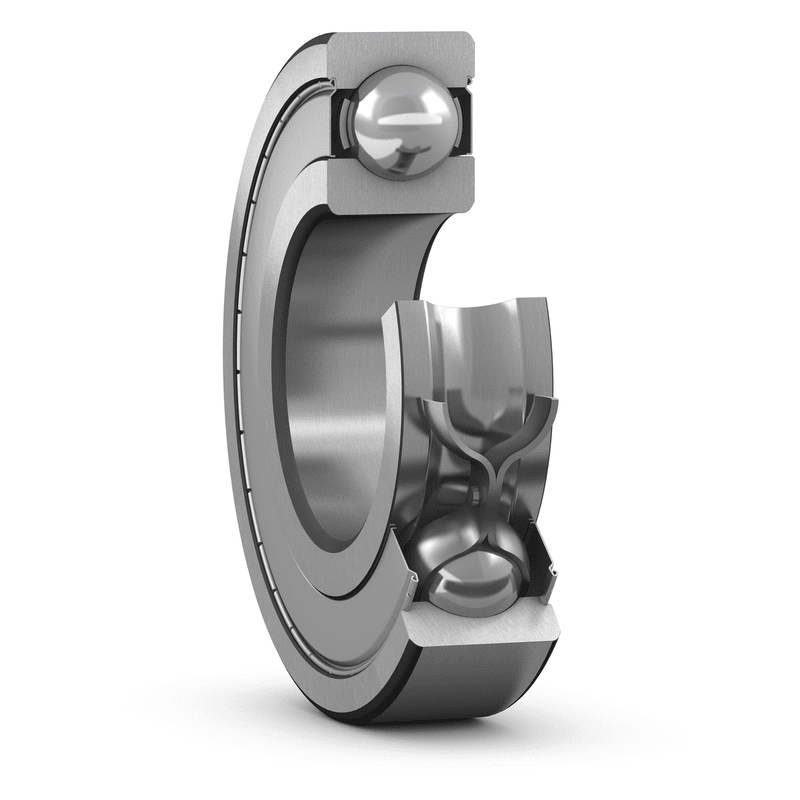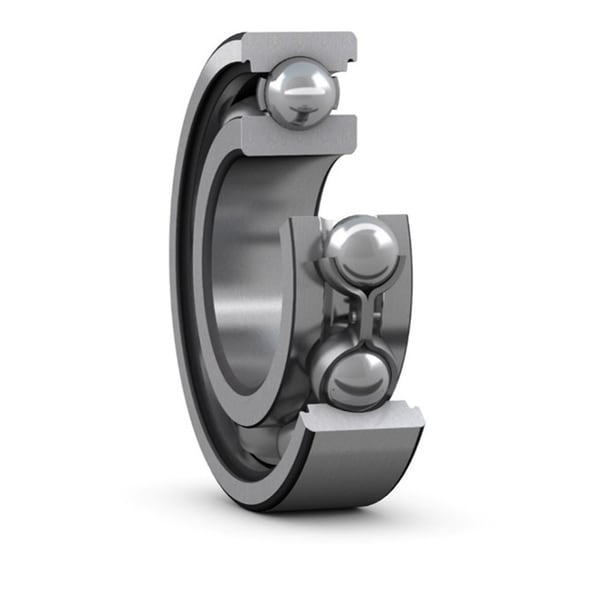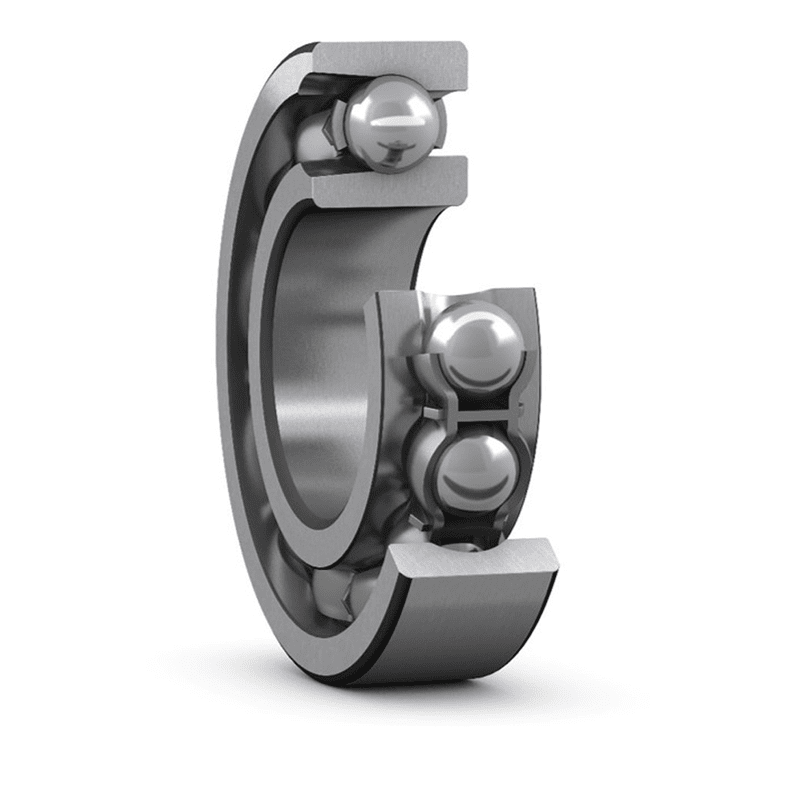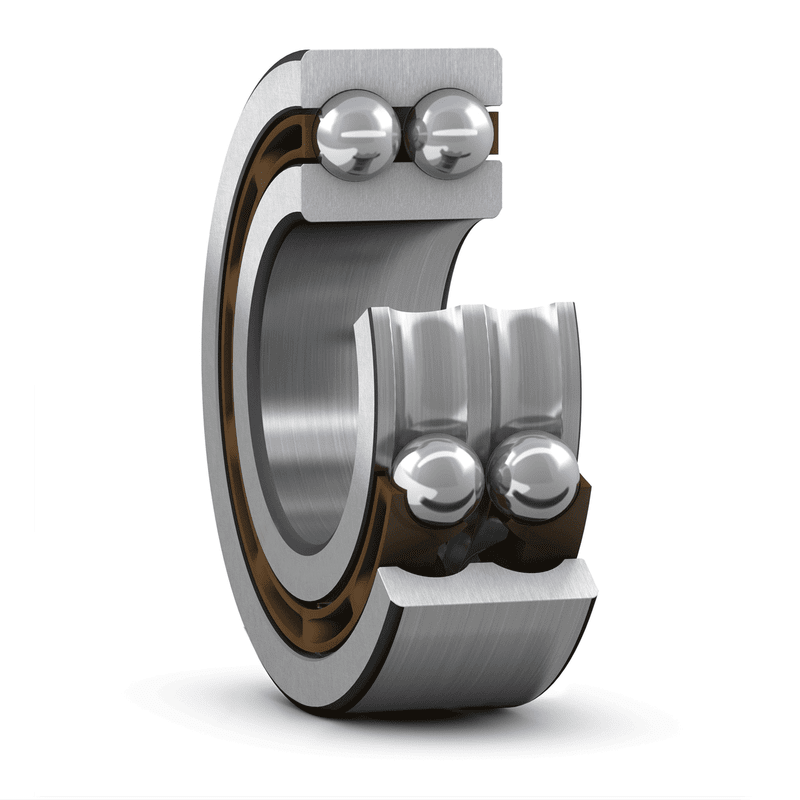Imported bearing lubricating grease is usually represented by apparent viscosity or similar viscosity. When explaining the viscosity of the grease, temperature and shear rate must be specified. Similar viscosity indicators can be used to control its low-temperature fluidity and pumpability. One of the important indicators for measuring the low-temperature performance of self-aligning ball bearing grease is low-temperature torque, which refers to the degree to which the grease blocks the rotation of low-speed flow bearings at low temperatures (below -20 ° C). The low-temperature torque of the grease is represented by the average of the starting torque and the torque after rotating 60mm.
The evapotranspiration (degree) of bearing grease indicates the degree to which the grease evaporates when used for a long time under high temperature conditions, and the lower the evapotranspiration, the better. The evaporation of grease mainly depends on the properties and fraction composition of the lubricating oil. Oxidative stability refers to the ability of lubricating grease to resist the effects of heat and oxygen during long-term storage or use at high temperatures, and to maintain its properties without permanent changes. Due to oxidation, there is often a decrease in the content of free alkali or an increase in the content of free organic acids, a decrease in droplet point, a darkening of appearance color, the appearance of unpleasant odors, a decrease in viscosity and strength limits, a decrease in similar viscosity, the generation of corrosive products and substances that damage the structure of lubricating grease, resulting in soap oil separation. Therefore, in long-term storage of lubricating grease, it should be stored in a dry and ventilated environment, protected from sunlight exposure, and regularly checked for changes in free alkali or free organic acid, corrosiveness, and other items to ensure its quality and performance. The selection of specifications, dimensions, and accuracy based on the usage location, usage conditions, and environmental conditions, combined with suitable imported bearings, is a prerequisite for ensuring bearing life and reliability.
Application location: Self aligning ball bearings are suitable for bearing combined radial and axial loads mainly consisting of radial loads. They are usually paired with two sets of bearings and are mainly used in the transmission parts of automobiles such as front and rear wheel hubs, active bevel gears, differentials, and reducers.
Allowable speed: In a correctly installed and well lubricated environment, it is allowed to be 0.3-0.5 times the maximum speed of the bearing. Under normal circumstances, a maximum speed of 0.2 times Z is recommended.
Allowable tilt angle: Self aligning ball bearings generally do not allow the shaft to tilt relative to the housing hole. If there is a tilt, the Z value should not exceed 2 '.
Allowable temperature: Under normal load conditions, with high temperature resistance and sufficient lubrication, bearings are generally allowed to operate at ambient temperatures ranging from -30 ℃ to 150 ℃.
Imported bearings have a longer bearing life Z when there is a slightly negative operating clearance. But in reality, it is very difficult to maintain the optimal state of the bearing. Once certain usage conditions change, the negative clearance increases, which leads to a significant decrease in the service life or heating of the self-aligning ball bearing. Therefore, when selecting the initial clearance, it is usually required that the operating clearance be only slightly greater than zero.

Single row deep groove ball bearings are the most widely used type of bearing. Provide closed (with sealed or dust cover) or open design. Open type be...

Stainless steel deep groove ball bearings can resist corrosion caused by moisture and other media. Provide closed (with sealed or dust cover) or open ...

A single row deep groove ball bearing with a ball loading notch has a ball loading notch on both the inner and outer rings, which is used to load more...

Double row deep groove ball bearings are very suitable for use in bearing configurations where the load-bearing capacity of single row deep groove bal...
 Copyright © 2002-2021 SKF Bearing Copyright Address:1-2F, Building 4, 1628 Lizheng Road, Lingang New Area, China (Shanghai) Pilot Free Trade Zone
Copyright © 2002-2021 SKF Bearing Copyright Address:1-2F, Building 4, 1628 Lizheng Road, Lingang New Area, China (Shanghai) Pilot Free Trade Zone